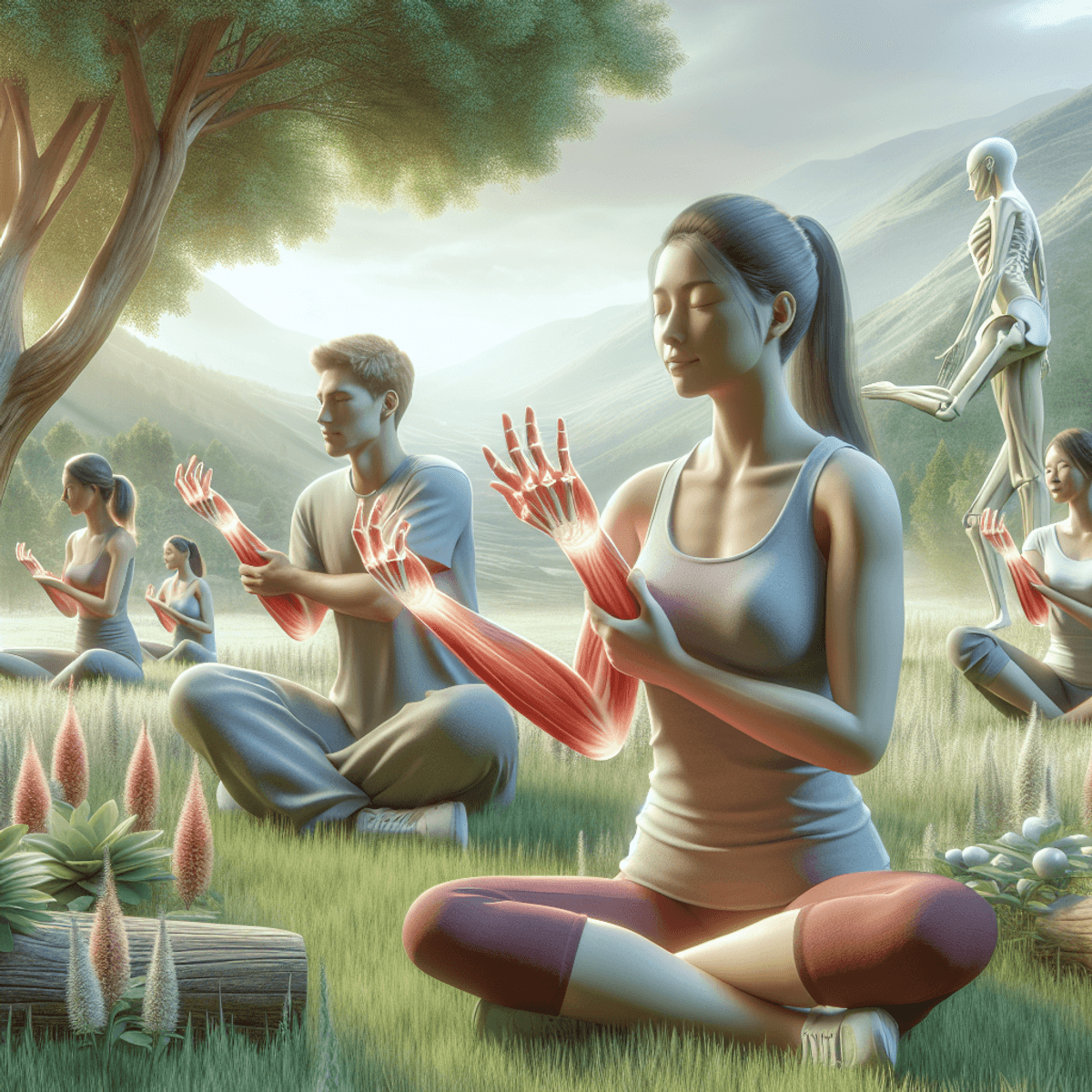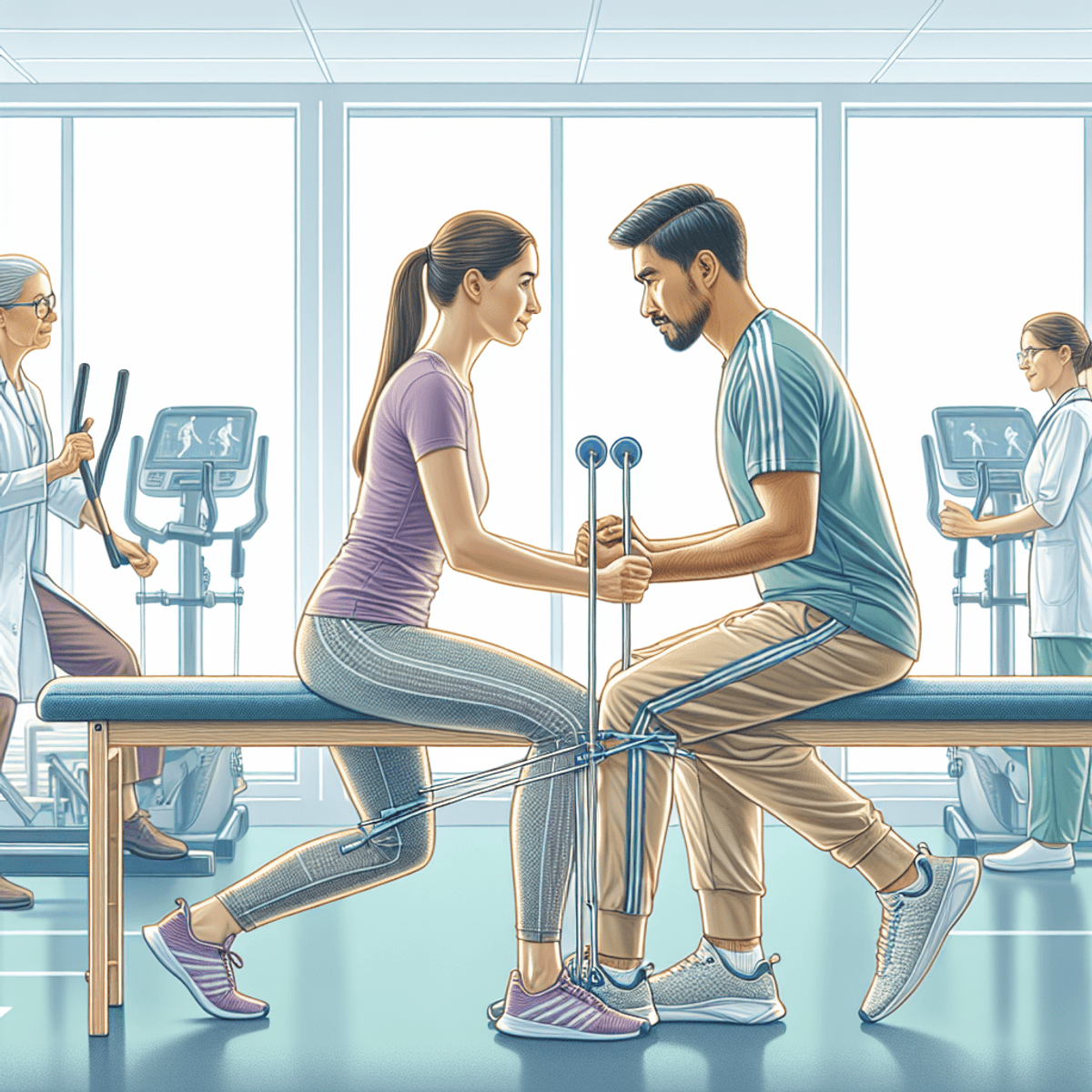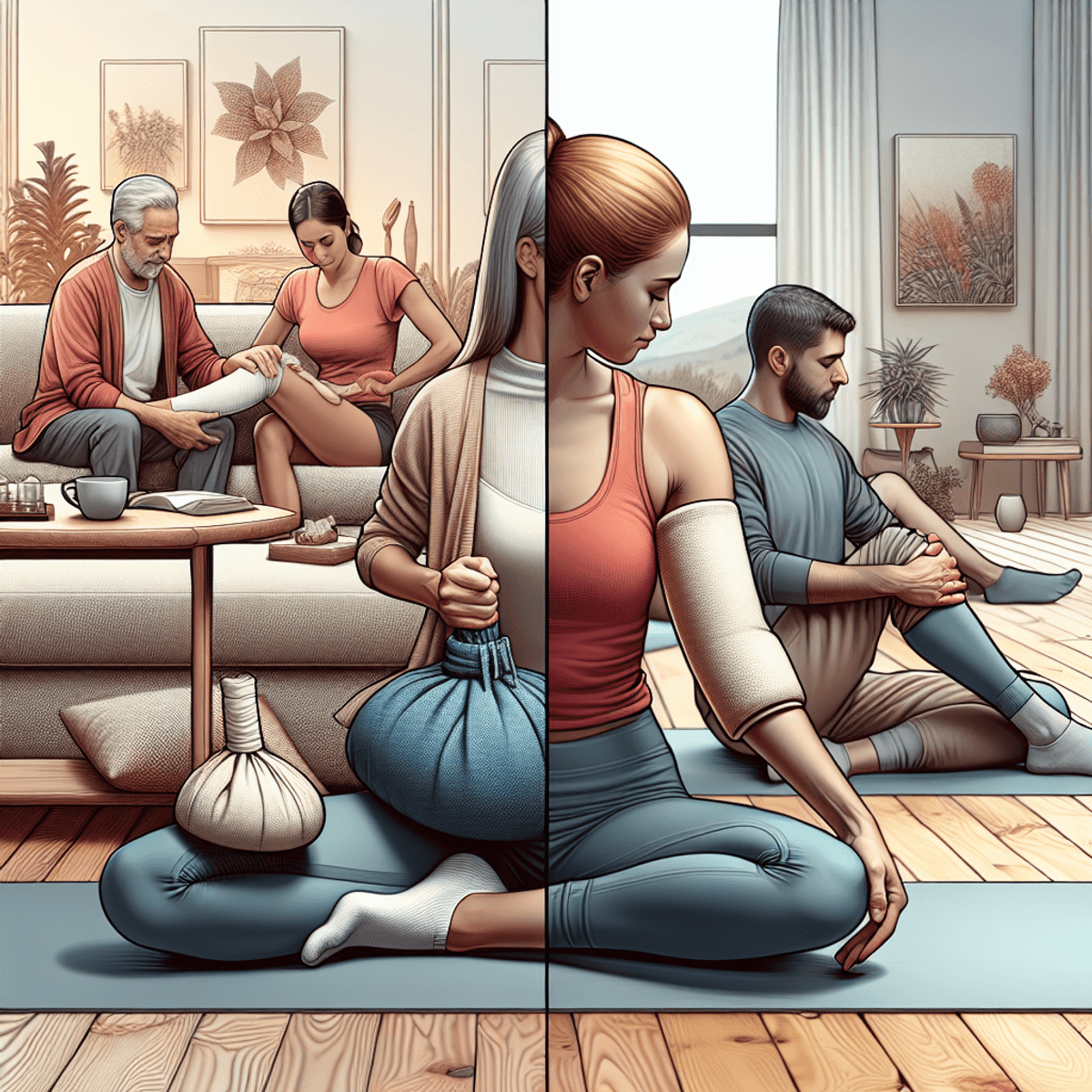Services
Joint Pain Treatment at Disha Arogya Dham
Joint Pain Treatment at Disha Arogya Dham
Introduction
Joint Pain Treatment at Disha Arogya Dham focuses on providing holistic healing through specialized Ayurvedic treatments. Recognized as one of India’s leading centers for Ayurveda and naturopathy, Disha Arogya Dham excels in addressing various health conditions, particularly joint pain. Their team of experienced Ayurvedic doctors combines traditional therapies with modern techniques to offer comprehensive joint pain management.
From herbal medications and therapeutic massages to personalized diet plans and lifestyle modifications, every aspect of treatment is tailored to individual needs. The focus is not just on relieving symptoms but also on addressing the root cause of the pain, promoting long-term healing and overall well-being. With a serene environment and state-of-the-art facilities, Disha Arogya Dham provides a rejuvenating experience that aids in the recovery process.
Addressing joint pain is crucial as it significantly impacts the quality of life. Persistent pain can limit mobility, hinder daily activities, and reduce overall well-being. Effective treatment is essential to manage symptoms such as swelling, tenderness, and restricted movement.
This article explores different treatment options for joint pain at Disha Arogya Dham, with a focus on Ayurvedic practices. You will learn about:
- The common causes and symptoms of joint pain.
- Ayurvedic approaches to managing joint pain.
- Lifestyle modifications that support joint health.
- Targeted treatments for specific conditions like frozen shoulder and hip bursitis.
By understanding these elements, you can gain insights into achieving long-term relief and improved joint health through Ayurveda.
Understanding Joint Pain and Its Causes
Joint pain is a common problem that can greatly affect your quality of life. Knowing what causes it is the first step to finding the right treatment.
Common Causes of Joint Pain
Several factors contribute to joint pain, including:
- Cartilage Deficiency: With age or due to injury, the cartilage that cushions joints can wear down, leading to discomfort and pain.
- Aging: As you age, natural wear and tear on your joints can cause chronic pain conditions such as osteoarthritis.
- Inflammatory Conditions: Conditions like rheumatoid arthritis lead to inflammation in the joints, resulting in severe pain.
Symptoms Associated with Joint Issues
Identifying symptoms early can help in managing joint pain effectively:
- Swelling: Inflammation often causes visible swelling around the affected joints.
- Tenderness: Joints may become tender to touch, signaling underlying issues.
- Limited Mobility: Difficulty or pain while moving a joint is a common symptom of arthritis and other joint problems.
Role of Joint Stiffness
Joint stiffness makes discomfort and pain worse:
“Stiffness often restricts movement, making daily activities challenging and painful.”
Addressing joint stiffness through appropriate treatments can provide significant relief from joint pain.
Understanding these aspects helps in identifying the right treatment options for managing joint health effectively.
Ayurvedic Approach to Joint Pain Management at Disha Arogya Dham
1. Arthritis Treatment Pack: Herbal Formulations for Joint Health
The Arthritis Treatment Pack at Disha Arogya Dham (DAD) is a comprehensive solution designed to address the complexities of joint pain through natural means. This pack includes key components such as the Pain Care Decoction and Ayurveda joint care powder. These herbal formulations are rooted in ancient Ayurvedic principles and modern clinical research, making them a potent combination for alleviating joint discomfort.
Key Components:
- Pain Care Decoction: This herbal blend focuses on reducing inflammation and alleviating pain. Ingredients like turmeric, known for its anti-inflammatory properties, play a significant role.
- Ayurveda Joint Care Powder: Enriched with herbs that support cartilage health and joint lubrication, this powder aims to enhance mobility and reduce stiffness.
Benefits of Herbal Formulations:
- Natural Pain Relief: The Pain Care Decoction leverages herbs like turmeric and ginger, which possess natural pain-relieving properties, offering an effective alternative to synthetic medications.
- Reduced Inflammation: The anti-inflammatory ingredients help in decreasing swelling around the joints, providing significant relief from pain and discomfort.
- Improved Mobility: Regular use of the Ayurveda Joint Care Powder supports joint lubrication, making movements smoother and less painful.
- Side Effect-Free: Unlike many conventional arthritis medicines, these herbal formulations come with minimal side effects, making them suitable for long-term use.
The holistic approach to treating arthritis at Disha Arogya Dham emphasizes not only immediate relief but also long-term joint health. By integrating these herbal formulations into your daily routine, you can effectively manage symptoms associated with arthritis and other joint issues without relying heavily on conventional medicines.
Combining these treatments with lifestyle modifications such as a balanced diet rich in anti-inflammatory foods and regular exercise can further enhance the benefits.
2. Specialized Ayurvedic Therapies for Targeted Relief
At Disha Arogya Dham, our holistic approach to treating arthritis combines traditional Ayurvedic practices with modern diagnostic techniques. This unique treatment philosophy ensures personalized care that effectively manages joint pain.
Panchakarma Detoxification
Panchakarma is a cornerstone of Ayurvedic therapies for joints. It involves a series of detoxification procedures aimed at cleansing the body and restoring balance. Benefits for joints include:
- Removing accumulated toxins that contribute to inflammation and pain.
- Improving circulation, which aids in nourishing the joints and tissues.
- Enhancing overall well-being, thereby supporting long-term joint health.
Kati Basti Therapy
Kati Basti therapy specifically targets spinal issues, offering localized relief from pain. This treatment involves:
- Applying warm medicated oil on the lower back to penetrate deep into tissues.
- Reducing stiffness and discomfort by alleviating inflammation around the spine.
- Strengthening the muscles and tissues surrounding the spinal column, promoting better mobility.
By integrating these specialized therapies into your regimen, you gain a comprehensive approach to managing joint pain effectively.
Lifestyle Changes to Support Joint Health
Diet Tips for Managing Arthritis
Adding anti-inflammatory foods to your diet can make Ayurvedic treatments for joint pain more effective. Here are some key dietary tips:
- Turmeric: This spice has strong anti-inflammatory effects and can be added to meals or taken as a supplement.
- Ginger: Another powerful anti-inflammatory food, ginger can be used in cooking or enjoyed as ginger tea.
- Omega-3 Fatty Acids: Found in fish like salmon and flaxseeds, these acids help reduce inflammation and improve joint health.
- Leafy Greens: Vegetables such as spinach and kale are rich in antioxidants that fight inflammation.
Exercise Benefits for Joints
Regular moderate exercise is essential for keeping joints flexible and strong. To support joint health, try:
- Yoga: This practice improves flexibility, reduces stiffness, and strengthens muscles around the joints. Poses like the Warrior and Downward Dog can be particularly beneficial.
- Swimming: Low-impact yet highly effective, swimming helps build muscle strength without stressing the joints.
- Walking: A simple yet effective way to keep joints active, walking also aids in weight management which is crucial for reducing joint stress.
By making these lifestyle changes, you can take a holistic approach to managing joint pain alongside the treatments offered at Disha Arogya Dham.
Targeted Treatments at Disha Arogya Dham for Specific Conditions Related to Joint Pain
1. Frozen Shoulder Treatment Approaches at DAD: A Comprehensive Guide
Frozen shoulder, also known as adhesive capsulitis, is a condition characterized by stiffness and limited range of motion in the shoulder joint. This ailment often results from inflammation, injury, or prolonged immobilization and can significantly impact daily activities.
At Disha Arogya Dham (DAD), various treatment modalities specifically target frozen shoulder cases:
Ayurvedic Therapies
These therapies use traditional herbal formulations to reduce inflammation and improve mobility. Herbal oils and decoctions are applied topically to relieve pain and stiffness.
Panchakarma Detoxification
This comprehensive detox program helps eliminate toxins that contribute to inflammation. Procedures such as Abhyanga (therapeutic massage) and Swedana (steam therapy) enhance blood circulation and facilitate healing.
Kati Basti Therapy
Although primarily used for spinal health, this localized treatment can be adapted for shoulder issues. Warm medicated oil is retained over the affected area to provide deep tissue relief.
Physical Rehabilitation
Guided exercise routines designed to gradually restore shoulder mobility are integral to the treatment plan. These exercises focus on stretching and strengthening the shoulder muscles.
By integrating these diverse approaches, DAD aims to provide holistic relief from the symptoms of frozen shoulder while promoting long-term joint health.
2. Bursitis Management: Relieving Hip Pain with Ayurveda
Bursitis is an inflammatory condition affecting the bursae, small fluid-filled sacs that cushion the bones, tendons, and muscles near your joints. Hip bursitis commonly arises due to repetitive movements or prolonged pressure on the bursa around the hip joint. Symptoms include:
- Pain both during activity and at rest
- Swelling in the affected area
- Limited mobility
At Disha Arogya Dham, Ayurvedic treatments focus on reducing inflammation and relieving pain naturally. Herbal formulations and therapies aim to soothe inflamed bursa sacs, promoting quicker recovery and enhanced mobility.
In addition to bursitis treatment for hips, DAD offers specialized therapies tailored to manage conditions like osteoarthritis and temporomandibular joint (TMJ) dysfunction. These comprehensive approaches ensure holistic care for a range of joint-related issues.
Key treatments include:
- Panchakarma detoxification to remove toxins
- Kati Basti therapy for targeted relief

Home Remedies and Self-Care Practices to Alleviate Knee Pain Effectively
Managing knee pain at home can complement professional treatments and enhance overall relief. Here are simple yet effective home remedies and self-care practices you can adopt:
Knee Taping Techniques Explained
Knee taping involves applying adhesive strips around the knee area to provide support, reduce pain, and improve function. Properly executed knee taping can:
- Stabilize the knee joint: Helps prevent unnecessary movement that could lead to further injury.
- Reduce swelling: Compression from the tape can help minimize inflammation.
- Enhance proprioception: Improves awareness of knee positioning, aiding in better movement patterns.
Additional Home Remedies for Knee Pain
- Cold Compress: Apply an ice pack wrapped in a cloth to the affected area for 15-20 minutes. This reduces inflammation and numbs sharp pain.
- Warm Compress: Use a warm towel or heating pad on the knee for 15-20 minutes to relax muscles and improve blood flow.
- Turmeric Milk: Drink a glass of warm milk mixed with a teaspoon of turmeric powder daily. Turmeric has anti-inflammatory properties that can help reduce pain.
- Epsom Salt Bath: Soak in a warm bath with Epsom salt for 20 minutes to ease muscle tension and reduce inflammation.
- Gentle Exercises: Engage in low-impact exercises like swimming or cycling to maintain joint flexibility without putting excessive strain on the knees.
Integrating these home remedies into your routine can offer significant relief from knee pain, making it easier to engage in daily activities without discomfort.
Conclusion
Joint Pain Treatment at Disha Arogya Dham highlights the benefits of Ayurveda for joints, offering natural and effective solutions. The center’s personalized approaches, including TMJ treatment and bursitis management strategies, provide comprehensive care tailored to individual needs. Embrace Ayurveda for long-term relief from joint pain issues and explore other specialized treatments available today.
FAQs (Frequently Asked Questions)
What is Disha Arogya Dham and how does it approach joint pain treatment?
Disha Arogya Dham is a holistic healing center specializing in Ayurvedic treatments for joint pain. It emphasizes addressing the root causes of joint issues to improve overall quality of life, offering various treatment options that integrate traditional Ayurvedic practices with modern diagnostic techniques.
What are the common causes and symptoms of joint pain?
Common causes of joint pain include cartilage deficiency, aging, and conditions like arthritis. Symptoms often associated with arthritis include swelling, tenderness, limited mobility, and joint stiffness, which can exacerbate pain and discomfort.
What is included in the Arthritis Treatment Pack at Disha Arogya Dham?
The Arthritis Treatment Pack includes key components such as Pain Care Decoction and Ayurveda joint care powder. These herbal formulations are designed to alleviate pain and reduce inflammation in the joints, promoting better joint health.
How does Panchakarma detoxification benefit joint health?
Panchakarma detoxification is a unique Ayurvedic process that promotes overall well-being by eliminating toxins from the body. It plays a significant role in enhancing joint health by improving circulation, reducing inflammation, and facilitating better mobility.
What lifestyle modifications can support joint health alongside treatments?
Incorporating dietary recommendations such as anti-inflammatory foods like turmeric and ginger can complement Ayurvedic treatments for managing joint pain. Additionally, engaging in regular moderate exercise helps maintain joint flexibility and strength.
What specialized treatments does Disha Arogya Dham offer for specific conditions like frozen shoulder or TMJ dysfunction?
Disha Arogya Dham provides targeted treatments for various conditions contributing to joint pain, including frozen shoulder and TMJ dysfunction. These treatments focus on alleviating stiffness, improving range of motion, and addressing specific symptoms associated with these ailments.
Discover more from DAD Ayurveda
Subscribe to get the latest posts sent to your email.









